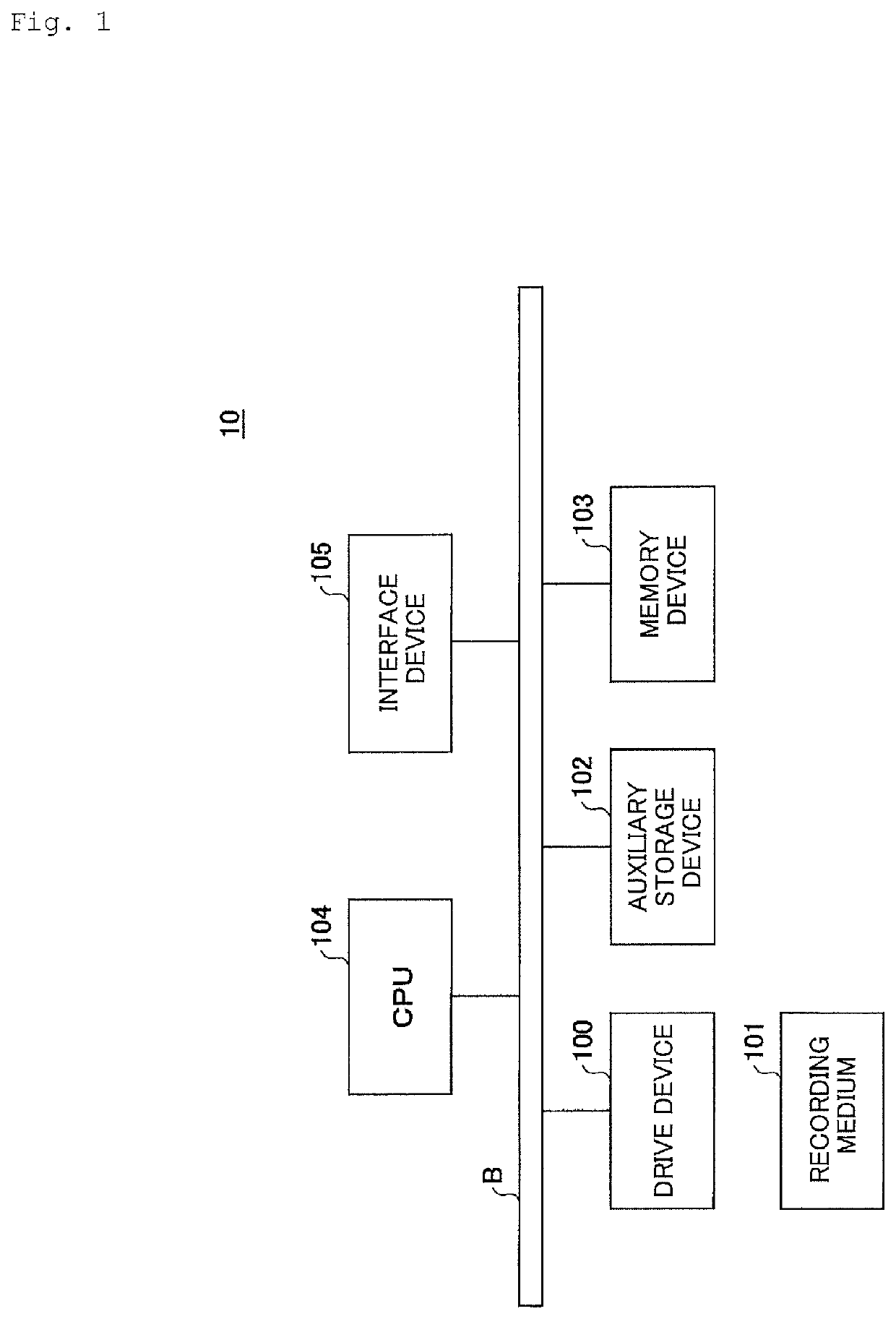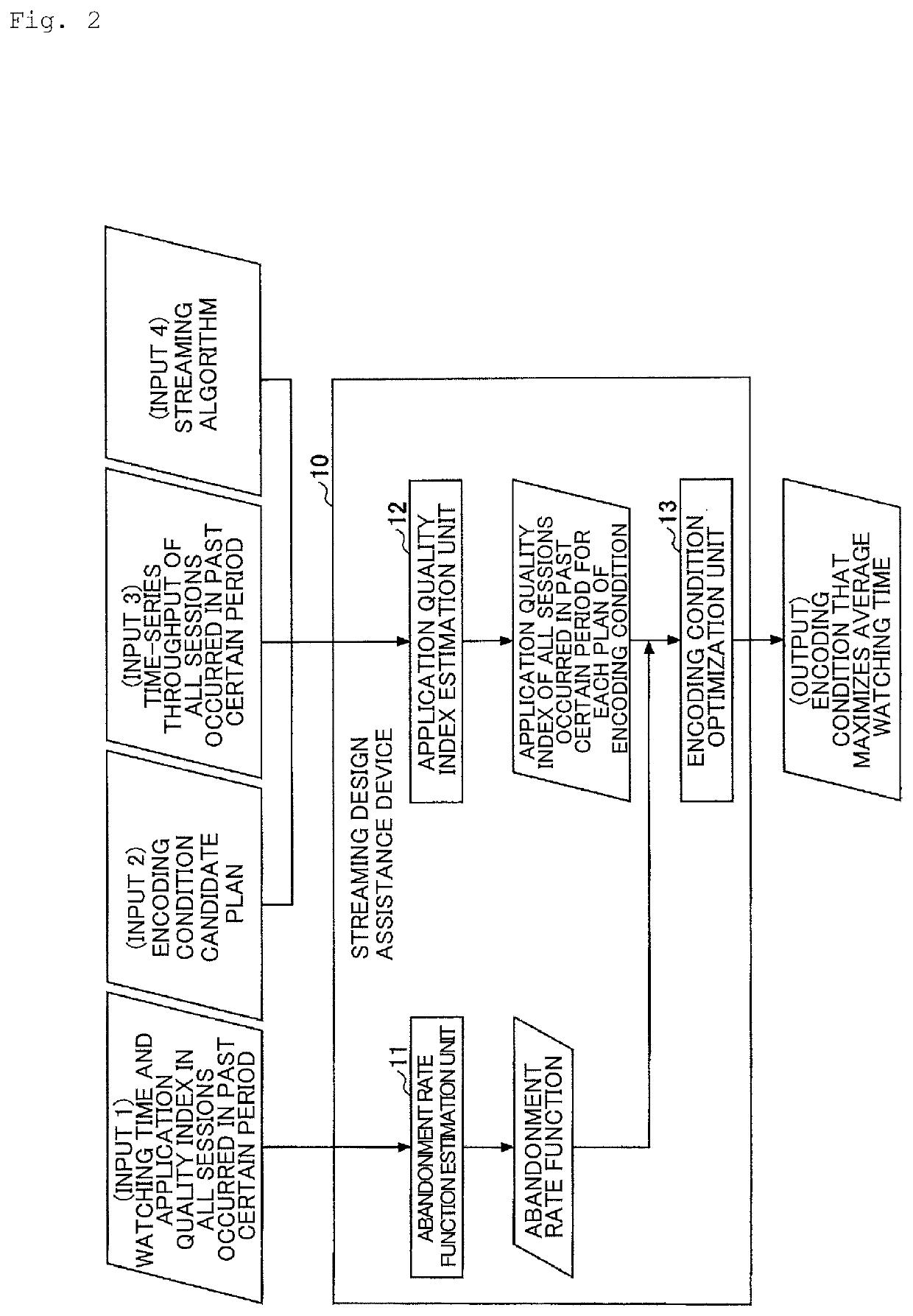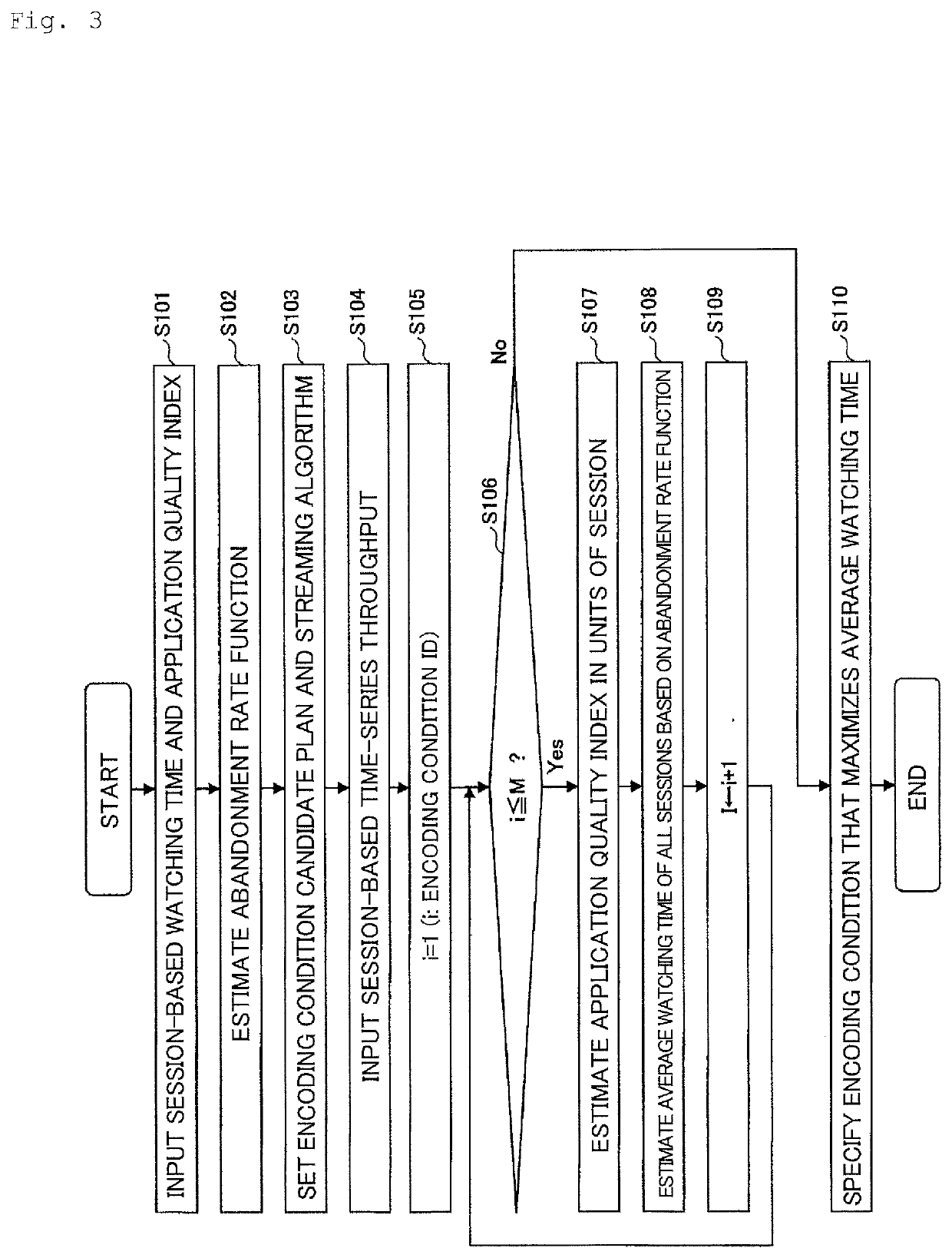Distribution design support method, distribution design support apparatus and program
a technology of distribution design and support method, applied in the direction of electrical equipment, selective content distribution, television systems, etc., can solve the problems of slow playback, encoding quality deterioration, and not always ensuring smooth video playback, so as to increase the watching time
- Summary
- Abstract
- Description
- Claims
- Application Information
AI Technical Summary
Benefits of technology
Problems solved by technology
Method used
Image
Examples
first embodiment
[0039]Hereinafter, an embodiment of the present invention will be described in detail with reference to the drawings. FIG. 1 is a diagram illustrating a hardware configuration example of a streaming design assistance device 10 according to a The streaming design assistance device 10 illustrated in FIG. 1 includes a drive device 100, an auxiliary storage device 102, a memory device 103, a CPU 104, an interface device 105, and the like connected to each other via a bus B.
[0040]A program that realizes processing in the streaming design assistance device 10 is provided by a recording medium 101 such as a CD-ROM. When the recording medium 101 having the program stored therein is set on the drive device 100, the program is installed from the recording medium 101 into the auxiliary storage device 102 via the drive device 100. However, the program may not always be installed on the recording medium 101, but the program may be downloaded from another computer via a network. The auxiliary st...
second embodiment
[0077]Here, xi is a user attribute vector of a session i. zi is an application quality index vector. α is a coefficient vector corresponding to the user attribute vector xi. γ is a coefficient vector corresponding to the application quality index vector zi. h0(t) is an abandonment rate at a watching time t of a reference session that a reference user (a user of which the user attribute vector is a zero vector) watches under a reference quality (the quality in which the application quality index vector is a zero vector). That is, in the second embodiment, the “abandonment rate function” is a model that represents the abandonment rates of individual sessions in a form of multiplying the abandonment rate of the reference session by the influence of an application quality index and a user attribute different for respective sessions.
[0078]In Formula (4), the user attribute vector xi is a vector made up of variables such as a gender, an age, or a user ID, for example. These variables may ...
third embodiment
[0092]Here, yi is a content attribute vector of a session i. zi is an application quality index vector. β is a coefficient vector corresponding to the content attribute vector yi. γ is a coefficient vector corresponding to the application quality index vector zi. h0(t) is an abandonment rate at a watching time t of a reference session in which reference content (content of which the content attribute vector is a zero vector) is watched under a reference quality (the quality in which the application quality index vector is a zero vector). That is, in the third embodiment, the “abandonment rate function” is a model that represents the abandonment rates of individual sessions in a form of multiplying the abandonment rate of the reference session by the influence of an application quality index and a content attribute different for respective sessions.
[0093]In Formula (7), the content attribute vector yi is a vector made up of variables such as a content length, a genre, a ranking, or a...
PUM
 Login to View More
Login to View More Abstract
Description
Claims
Application Information
 Login to View More
Login to View More - R&D
- Intellectual Property
- Life Sciences
- Materials
- Tech Scout
- Unparalleled Data Quality
- Higher Quality Content
- 60% Fewer Hallucinations
Browse by: Latest US Patents, China's latest patents, Technical Efficacy Thesaurus, Application Domain, Technology Topic, Popular Technical Reports.
© 2025 PatSnap. All rights reserved.Legal|Privacy policy|Modern Slavery Act Transparency Statement|Sitemap|About US| Contact US: help@patsnap.com



